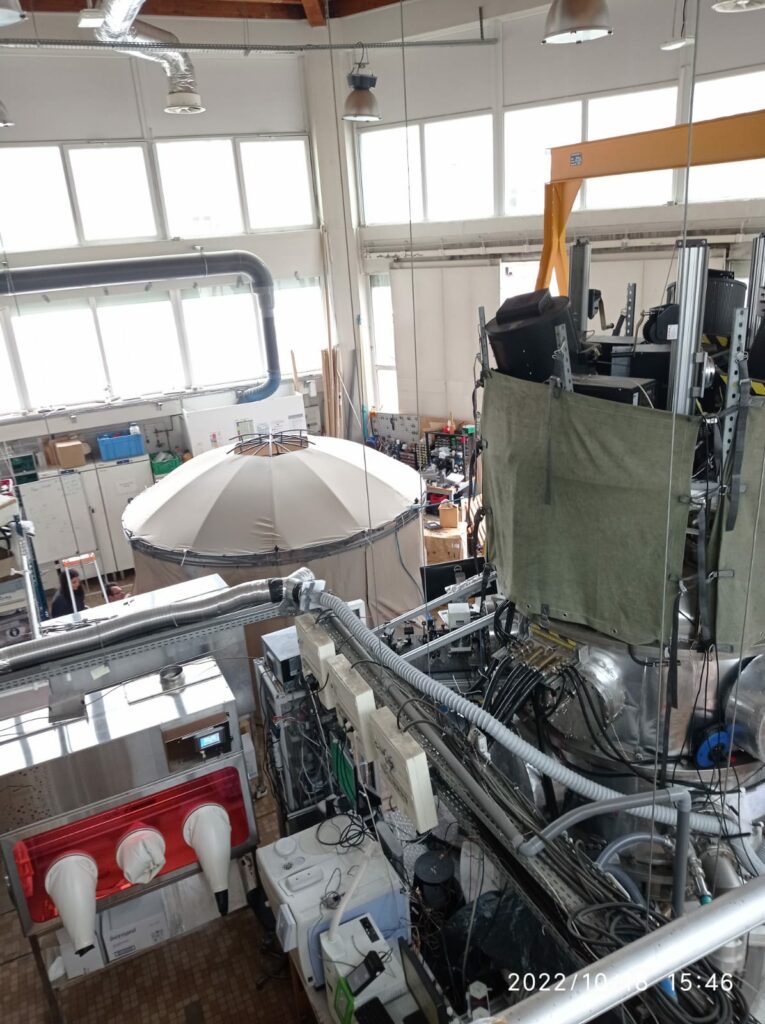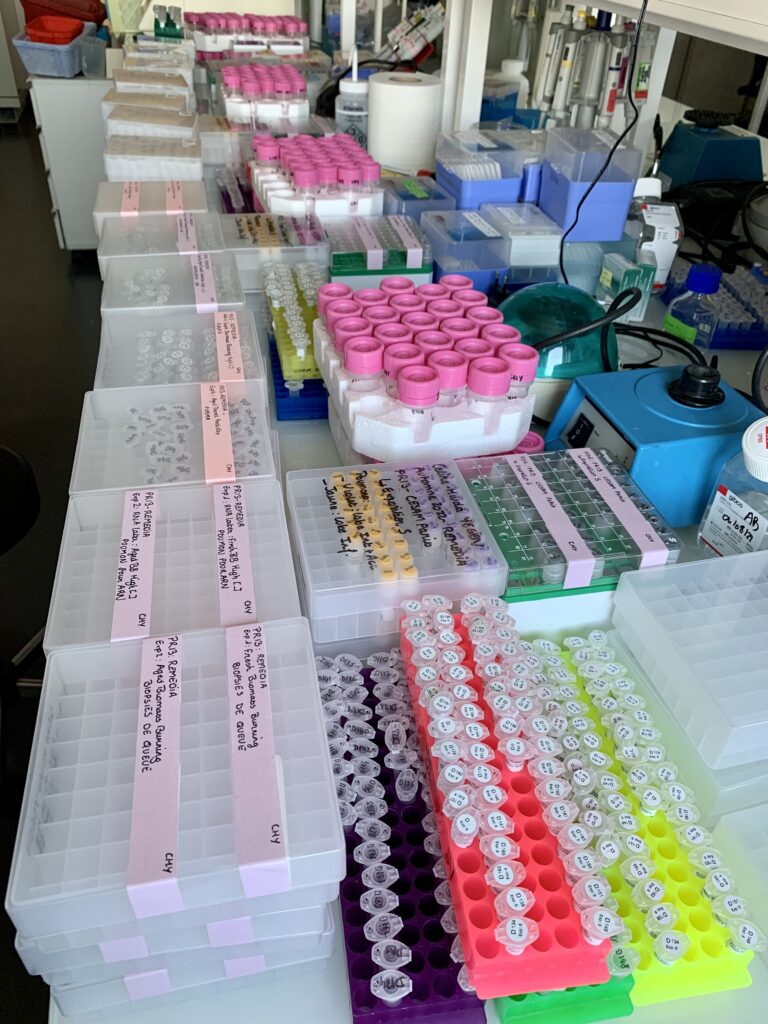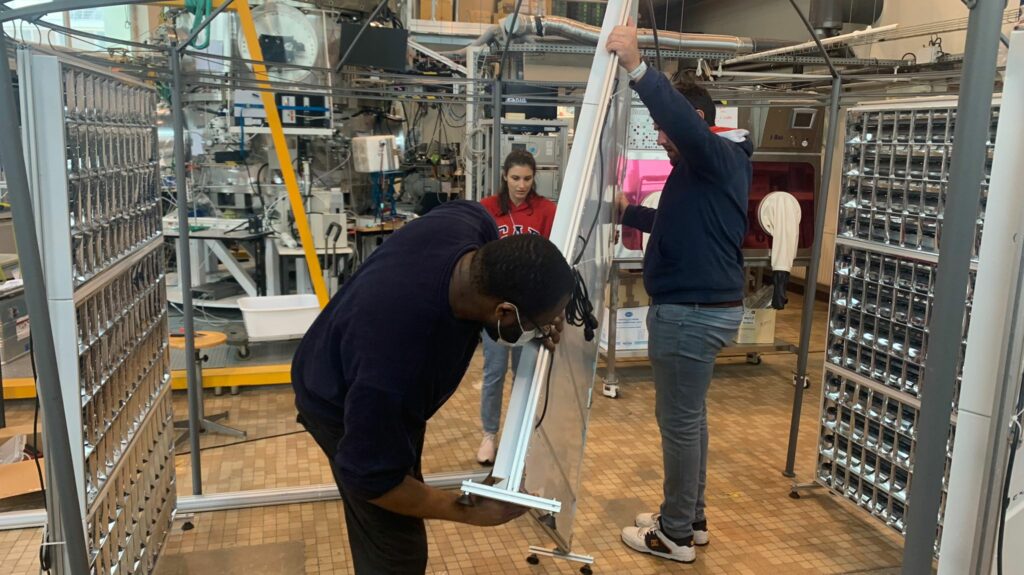REMEDIA: Une campagne innovante et pluridisciplinaire à l'automne 2022
In REMEDIA project, fundamental research occupies a crucial place to understand the impact of the exposome in the course of chronic obstructive pulmonary disease (COPD) and cystic fibrosis (CF). One of our key experimental task is to implement a multidisciplinary work between physico-chemists of atmospheric sciences and lung biologists. During the 2022 fall, we set up an innovative common campaign, where two major challenges were addressed: the first challenge was for the physico-chemists to combine two complementary simulation chambers in order to simulate realistic atmospheres of urban environnements, when the second challenge was for the biologists to develop dedicated protocols allowing to have rapid read-outs at the end of each exposure period, in order to adapt the nature of the next atmosphere simulated (only 24h between 2 exposure periods).
To meet REMEDIA experimental needs, we combined both LISA and FORTH atmospheric simulation chambers. LISA’s Chamber for Experimental Multiphase Atmospheric Simulation (CESAM) is a stainless-steel enclosure with a volume of 4.2m3, dedicated to the study of multiphase atmospheric processes such as the formation of secondary aerosols or the reactivity of gaseous compounds in the cloud phase. The FORTH mobile atmospheric simulation chamber (FORTH-MSC), consists of a 10 m3 Teflon reactor surrounded by ultraviolet lights inside a protective enclosure to produce fresh and aged biomass burning emissions. The FORTH-MSC including all necessary combustion equipment, disposable chambers and characterization instrumentation traveled 2800 km (from Patras, Greece to Paris, France). Gaseous primary pollutants (e.g.: NO, CO, etc.), as well as organic precursors (mixture of Volatile Organic Compounds), were introduced in CESAM chamber. The irradiation system of the CESAM chamber (simulating the solar radiation) initiated oxidation processes of these compounds. Hence, complex photochemistry mechanisms lead to the formation of functionalized secondary species in both gas and particle phases.
The combination of the FORTH and CESAM atmospheric simulation chambers made it possible to generate atmospheres representative of a variety of atmospheric conditions strongly influenced by biomass combustion. These atmospheres were used to investigate their health effects on preclinical CF models.
The rapid analysis of biological endpoints allowed us to adapt the nature/composition of the different atmospheres to address the issue of understanding the mechanisms underlying the health effects of air pollution in compromised individuals of different sex (male and female), age (young and old), and genetic backgrounds (∆F508 and Scnn1b model of CF).
A total of 6 different exposures were carried out (72h duration each), resulting in a large dataset. Many biological samples were obtained, requiring the preparation of more than 5588 sample collection tubes, 860 biopsies for histological analysis and 1.500 minutes of measurement of pulmonary function as an example. All these precious biological samples will allow us to better understand the role of air pollution in the progression of CF, and thus highlight new challenges to better decipher the impact of exposome on the course of CF.




